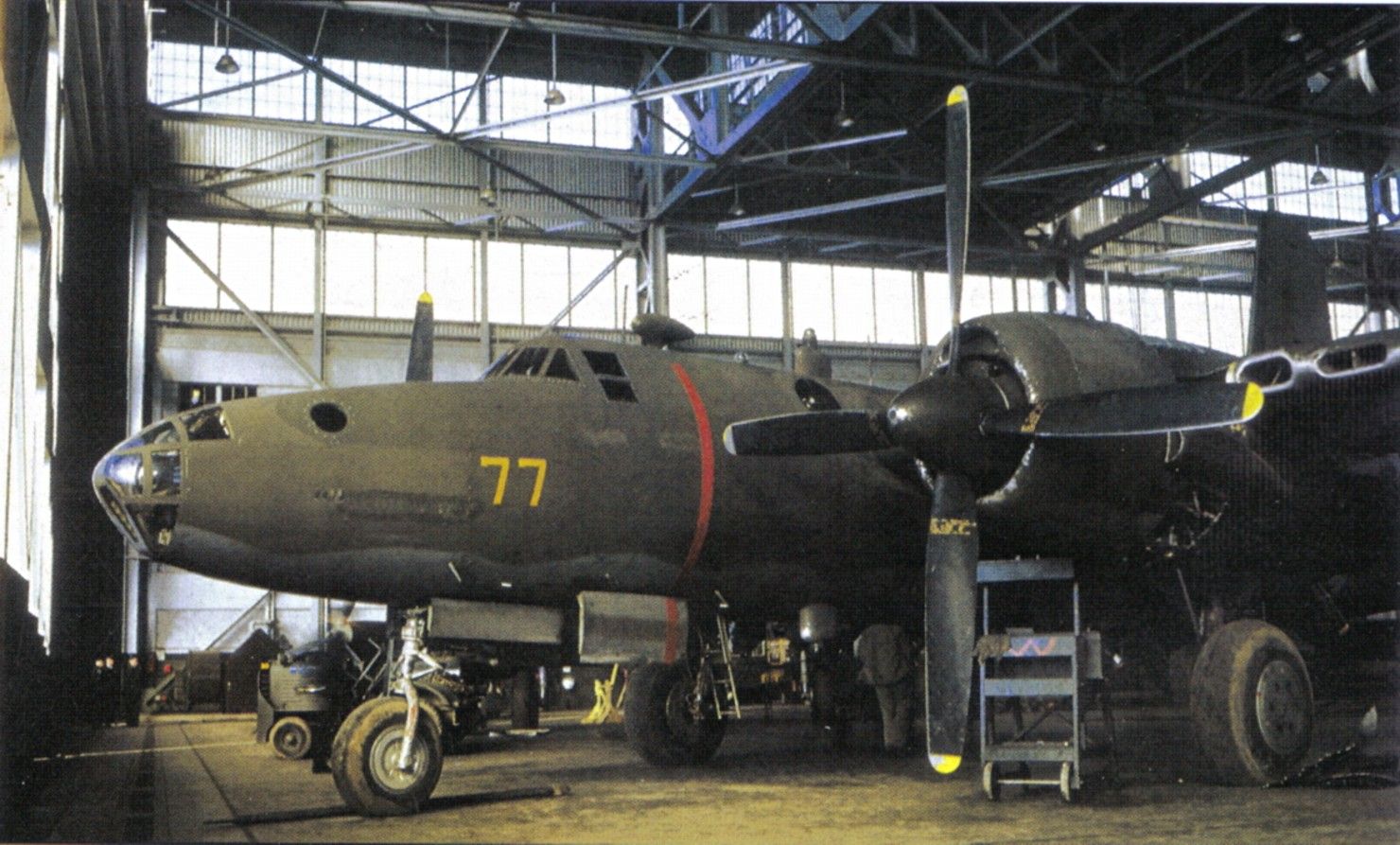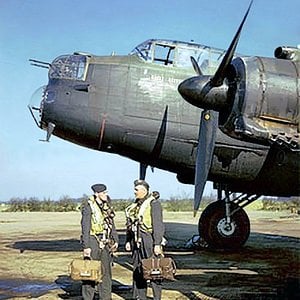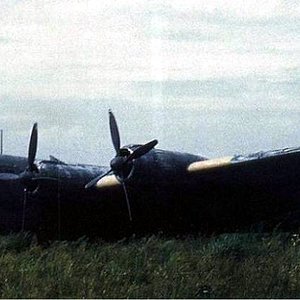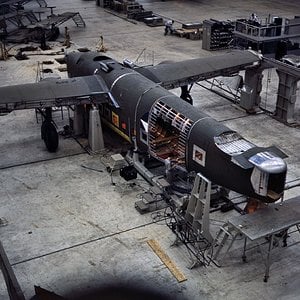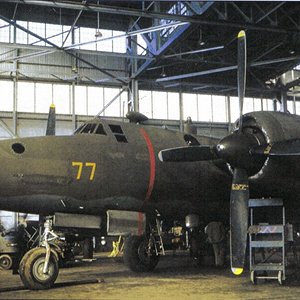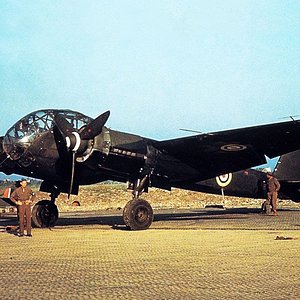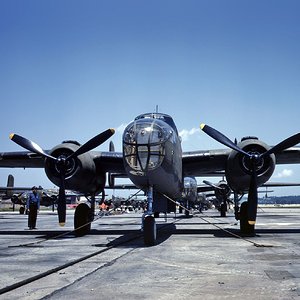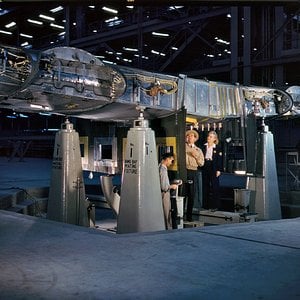Navigation
Install the app
How to install the app on iOS
Follow along with the video below to see how to install our site as a web app on your home screen.
Note: This feature may not be available in some browsers.
More options
You are using an out of date browser. It may not display this or other websites correctly.
You should upgrade or use an alternative browser.
You should upgrade or use an alternative browser.
Design and development
The order for a high-altitude medium bomber was put out on 13 February 1940; the XB-28 first flew on 26 April 1942. The XB-28 was based on North American Aviation's highly successful B-25 Mitchell, but as it evolved it became a completely new design, much more reminiscent of the Martin B-26 Marauder. The overall configuration of the B-25 and XB-28 were fairly similar; the most important distinction was that the twin tail of the B-25 was changed to a single tail on the XB-28. It was among the first planes with a pressurised cabin.
The XB-28 proved an excellent design, with significantly better performance than the B-25, but it was never put into production. High-altitude bombing was hampered significantly by factors such as clouds and wind, which were frequent occurrences in the Pacific. At the same time, medium bombers were becoming much more able at lower altitudes. The models being used at these levels had been used successfully in combat for months and even years. The gains in aircraft performance that came with high altitude flight were not significant enough to justify switching from low-altitude bombing.
Testing and evaluation
Even though the Army Air Forces rejected the XB-28 as a bomber, they ordered another prototype. Designated XB-28A, it was meant to explore the possibility of use as a reconnaissance aircraft. This design never progressed past the prototype stage either. The XB-28A crashed into the Pacific off Southern California after crew bail-out on 4 August 1943.[1]
Specifications (XB-28A)
Side view of the North American XB-28.
Data from [2]
General characteristics
Crew: five
Length: 56 ft 4 in (17.16 m)
Wingspan: 72 ft 6 in (22.13 m)
Height: 22 ft 0 in (6.71 m)
Wing area: 675.9 ft² (62.8 m²)
Empty weight: 25,575 lb (11,600 kg)
Loaded weight: 35,763 lb (16,222 kg)
Max. takeoff weight: 39,135 lb (17,751 kg)
Powerplant: 2 × Pratt & Whitney R-2800-27 turbosupercharged radial engines, 2,000 hp (1,500 kW) each
Performance
Maximum speed: 372 mph (599 km/h) at 25,000 ft (7,600 m)
Cruise speed: 255 mph (410 km/h)
Range: 2,040 mi (3,280 km)
Service ceiling: 34,800 ft (10,607 m)
Rate of climb: 1,111 ft/min (6 m/s)
Wing loading: 52.87 lb/ft² (258.14 kg/m²)
Power/mass: 0.112 hp/lb (184 W/kg)
Armament
Guns: 6 × .50 in (12.7 mm) machine guns in remote-sighted turrets
Bombs: Normal 2,000 lb (907 kg), Maximum 4,000 lb (1,814 kg)
The order for a high-altitude medium bomber was put out on 13 February 1940; the XB-28 first flew on 26 April 1942. The XB-28 was based on North American Aviation's highly successful B-25 Mitchell, but as it evolved it became a completely new design, much more reminiscent of the Martin B-26 Marauder. The overall configuration of the B-25 and XB-28 were fairly similar; the most important distinction was that the twin tail of the B-25 was changed to a single tail on the XB-28. It was among the first planes with a pressurised cabin.
The XB-28 proved an excellent design, with significantly better performance than the B-25, but it was never put into production. High-altitude bombing was hampered significantly by factors such as clouds and wind, which were frequent occurrences in the Pacific. At the same time, medium bombers were becoming much more able at lower altitudes. The models being used at these levels had been used successfully in combat for months and even years. The gains in aircraft performance that came with high altitude flight were not significant enough to justify switching from low-altitude bombing.
Testing and evaluation
Even though the Army Air Forces rejected the XB-28 as a bomber, they ordered another prototype. Designated XB-28A, it was meant to explore the possibility of use as a reconnaissance aircraft. This design never progressed past the prototype stage either. The XB-28A crashed into the Pacific off Southern California after crew bail-out on 4 August 1943.[1]
Specifications (XB-28A)
Side view of the North American XB-28.
Data from [2]
General characteristics
Crew: five
Length: 56 ft 4 in (17.16 m)
Wingspan: 72 ft 6 in (22.13 m)
Height: 22 ft 0 in (6.71 m)
Wing area: 675.9 ft² (62.8 m²)
Empty weight: 25,575 lb (11,600 kg)
Loaded weight: 35,763 lb (16,222 kg)
Max. takeoff weight: 39,135 lb (17,751 kg)
Powerplant: 2 × Pratt & Whitney R-2800-27 turbosupercharged radial engines, 2,000 hp (1,500 kW) each
Performance
Maximum speed: 372 mph (599 km/h) at 25,000 ft (7,600 m)
Cruise speed: 255 mph (410 km/h)
Range: 2,040 mi (3,280 km)
Service ceiling: 34,800 ft (10,607 m)
Rate of climb: 1,111 ft/min (6 m/s)
Wing loading: 52.87 lb/ft² (258.14 kg/m²)
Power/mass: 0.112 hp/lb (184 W/kg)
Armament
Guns: 6 × .50 in (12.7 mm) machine guns in remote-sighted turrets
Bombs: Normal 2,000 lb (907 kg), Maximum 4,000 lb (1,814 kg)

